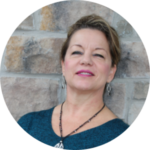Healing from Trauma

Barb Orr
Barb Orr
March 21, 2022
No Comments
The fascinating and profound things that have been researched and discovered about the sources of trauma, what it does to the body and brain, and what it takes to heal from trauma is informing the entire world of treatment. We have learned that the effects of trauma/extreme chronic stress don’t just “go away” – that they stay in the body, the nervous system, and the brain, until healing happens. Sometimes a powerfully positive, nurturing, and safe relationship provides much of this healing – you know, “people heal people”. This is true. This has always been true. Additionally, we’ve discovered a myriad of evidence-based activities, practices, and experiences that are effective in re-setting the autonomic nervous system, calming the brain’s activities, and reversing the physical manifestations of trauma (we know that a traumatized person is at higher risk for just about any medical condition or disease, higher levels of pain, and substance abuse, for instance). These include, but are not limited to: being in nature, jumping on a trampoline, chanting, meditating, mindfulness practices, grounding exercises, dancing, singing, laughing, awe-inspiring art and views, extra physical rest, being in community, slowing down, altruism, theater work, being in and around water, and the list goes on. Ancient cultures instinctively knew – and practiced – some of these things; many cultures traditionally engaged in drumming circles, community dancing, nature journeys, living mindfully, creative endeavors.
What if we more readily and broadly took what we’ve learned about
healing
from trauma and applied it in a preventative way – both personally and as a society? What if we realized that if we looked after
all babies and toddlers to ensure that they have a safe, nurturing, non-deprived environment so that their nervous systems could be calmer, their brains could develop more normally, and their physical health wasn’t compromised by extreme stress? What if we supported all parents in ways that reduced their stressors regarding having enough food, having shelter, having time and childcare and choices that made raising a family a more secure and peaceful experience? What if we modelled – individually and as a community – ways to live peacefully and compassionately, with empathy for what others are going through and what they need, whether from an agency or from supportive relationships? Since we all influence each other in countless ways, whether we realize it or not, what would be the collective positive impact of designing our communities and our national policies in ways that are both preventative and healing? How might people’s psyches be freed up to pursue enriching, creative, supportive, healing activities and relationships and community work that benefitted not only individuals, but society at large? How might we save time, energy, and money that is currently being spent on arrests and incarceration, mental health facilities, medical disease, school discipline, homelessness, recovering from violence and upheaval, and the like? How might our society be moved into a more safe, supportive, healthy, creative, and enriching entity that led to further evolution along the path of peace and prosperity for the collective? How might each and every one of us benefit, in ways small and large, if we literally took care of one another as individuals, yes, but also as a country? It is, after all, in the Constitution: the welfare of all (my italics). We could live up to that, if we so choose.
